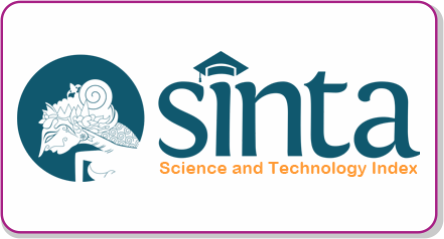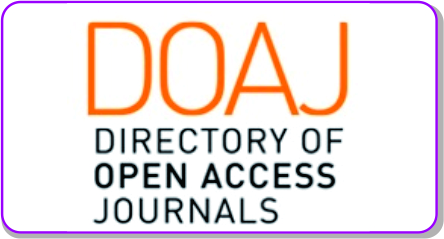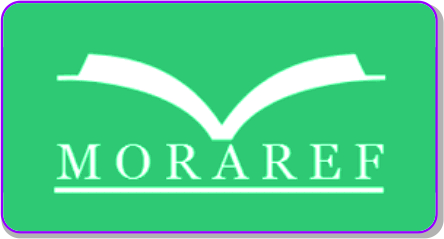Navigating the Digital Landscape: How Nahdlatul Ulama Volunteers Use Social Media for Organizational Promotion
DOI:
https://doi.org/10.30983/it.v8i2.8656Keywords:
Digital Volunteers, Instagram, Nahdlatul UlamaAbstract
This article aims to investigate how the digital volunteers of Nahdlatul Ulama (NU) utilize social media to promote the organization. The study employs a qualitative approach, gathering data through online interviews and content analysis of the Instagram account @nucreativemedia. This study will address three questions: First, what motivates digital volunteers to create the Instagram account @nucreativemedia? Second, what types of content are promoted on this account? Third, how do digital volunteers present NU content on Instagram? Based on these questions, the findings indicate that: First, the initiative to create the Instagram account @nucreativemedia is driven by the desire to counter radical and conservative Islamic movements on social media. Second, the content promoted includes NU scholars, fiqh and worship, social-political issues, and public facilities associated with NU, such as pesantren (Islamic boarding schools), hospitals, universities, and products. Third, the Instagram account @nucreativemedia enhances its content through a combination of colors, images, and audio that reflect NU culture. This promotional effort further reinforces NU's position and relevance in the online space.
References
Akmaliah, Wahyudi. “Reclaiming Moderate Islam in Nahdlatul Ulama: Challenging the Dominant Religious Authority in Digital Platform.” JOURNAL OF INDONESIAN ISLAM 16, no. 1 (June 1, 2022): 223. https://doi.org/10.15642/JIIS.2022.16.1.223-248.
———. “The Rise of Cool Ustadz: Preaching, Subcultures and the Pemuda Hijrah Movement.” In The New Santri, edited by Norshahril Saat and Ahmad Najib Burhani, 239–57. Singapore: ISEAS Publishing, 2020. https://doi.org/10.1355/9789814881487-015.
Arifianto, Alexander R. “Rising Islamism and the Struggle for Islamic Authority in Post- Reformasi Indonesia.” TRaNS: Trans -Regional and -National Studies of Southeast Asia 8, no. 1 (May 10, 2020): 37–50. https://doi.org/10.1017/trn.2019.10.
Asosiasi Penyelenggaraan Jasa Internet Indonesia (APJII). “Survei Penetrasi & Perilaku Internet 2023.” Jakarta, 2023.
Bataeva, Ekaterina, and Anastasiia Chumakova-Sierova. “Values in Visual Practices of Instagram Network Users.” In Conference on Integrated Computer Technologies in Mechanical Engineering–Synergetic Engineering, 992–1002. Springer, 2021.
Bayat, Asef. “Islamism and Social Movement Theory.” Third World Quarterly 26, no. 6 (September 2005): 891–908. https://doi.org/10.1080/01436590500089240.
Bennett, W Lance, and Alexandra Segerberg. “The Logic of Connective Action: Digital Media and the Personalization of Contentious Politics.” Information, Communication & Society 15, no. 5 (June 2012): 739–68. https://doi.org/10.1080/1369118X.2012.670661.
Braun, Virginia, and Victoria Clarke. Thematic Analysis: A Practical Guide. Los Angeles, London, New Delhi: SAGE Publications, 2021.
Bruinessen, Martin van. “Producing Islamic Knowledge in Western Europe: Discipline, Authority, and Personal Quest.” In Producing Islamic Knowledge: Transmission and Dissemination in Western Europe, edited by Martin van Bruinessen and Stefano Allievi, 1–27. London: Routledge, 2010.
Creswell, John W. Research Design: Qualitative, Quantitative, and Mixed Method Approaches. 4th ed. California: SAGE Publications, 2014.
Einstein, Mara. Brands of Faith: Marketing Religion in a Commercial Age. London and New York: Routledge, 2008.
Eriyanto, Eriyanto, and Nur Asri. Metode Netnografi: Pendekatan Kualitatif Dalam Memahami Budaya Pengguna Media Sosial. Bandung: Remaja Rosdakarya, 2021.
Griffin, Michael. “Visual Communication.” In The Handbook of Communication History, edited by Peter Simonson, Janice Peck, Robert T Craig, and John Jackson, 133–52. New York: Routledge, 2013.
Han, Muhamad Ibtissam. “Anak Muda, Dakwah Jalanan Dan Fragmentasi Otoritas Keagamaan: Studi Atas Gerakan Dakwah Pemuda Hijrah Dan Pemuda Hidayah.” UIN Sunan Kalijaga Yogyakarta, 2018.
Hannan, Abd, and Ach Fatayillah Mursyidi. “Social Media and the Fragmentation of Religious Authority among Muslims in Contemporary Indonesia.” Digital Muslim Review 1, no. 2 (2023): 84–104. https://doi.org/10.32678/dmr.v1i2.10.
Hew, Wai Weng. “The Art of Dakwah : Social Media, Visual Persuasion and the Islamist Propagation of Felix Siauw.” Indonesia and the Malay World 46, no. 134 (January 2, 2018): 61–79. https://doi.org/10.1080/13639811.2018.1416757.
Hoesterey, James Bourk. “Marketing Islam: Entrepreneurial Ethics and the Spirit of Capitalism in Indonesia.” Practical Matters Journal 10, no. 10 (2017).
Hosen, Nadirsyah. “Online Fatwa in Indonesia: From Fatwa Shopping to Googling a Kiai.” In Expressing Islam, 159–73. ISEAS Publishing, 2008. https://doi.org/10.1355/9789812308528-013.
Kailani, Najib, and Sunarwoto. “Televangelisme Islam Dalam Lanskap Otoritas Keagamaan Baru.” In Ulama Dan Negara Bangsa: Membaca Masa Depan Islam Politik Di Indonesia, edited by Noorhaidi Hasan, 179–206. Yogyakarta: Pusat Pengkajian Islam, Demokrasi, dan Perdamaian (PusPIDeP), 2019.
Kaptein, Nico J.G. “The Voice of the `Ulamâ’: Fatwas and Religious Authority in Indonesia.” Archives de Sciences Sociales Des Religions 125, no. 1 (January 1, 2004): 115–30. https://doi.org/10.4000/assr.1038.
Kozinets, Robert V. Netnography: The Essential Guide to Qualitative Social Media Research. 3rd ed. London: SAGE Publications, 2019.
Lovejoy, Kristen, and Gregory D Saxton. “Information, Community, and Action: How Nonprofit Organizations Use Social Media.” Journal of Computer-Mediated Communication 17, no. 3 (April 2012): 337–53. https://doi.org/10.1111/j.1083-6101.2012.01576.x.
Meyer, Birgit. “Aesthetics of Persuasion: Global Christianity and Pentecostalism’s Sensational Forms.” South Atlantic Quarterly 109, no. 4 (October 1, 2010): 741–63. https://doi.org/10.1215/00382876-2010-015.
Mohiuddin, Asif. “Islamism in the Digital Age: The Role of Cyberspace in Transforming Religious Authority.” In Navigating Religious Authority in Muslim Societies: Islamist Movements and the Challenge of Globalisation. Springer, 2023.
Nisa, Eva F. “Creative and Lucrative Daʿwa: The Visual Culture of Instagram amongst Female Muslim Youth in Indonesia.” Asiascape: Digital Asia 5, no. 1–2 (February 14, 2018): 68–99. https://doi.org/10.1163/22142312-12340085.
Nur’aeni, Ulvah, and Arfian Hikmat Ramdan. “Ideological Contestation on Youtube between Salafi and Nahdhatul ‘Ulama in Indonesia.” Journal of Contemporary Islam and Muslim Societies 7, no. 1 (June 30, 2023). https://doi.org/10.30821/jcims.v7i1.15244.
Omar, Faradillah Iqmar, Nor Azlili Hassan, and Iza Sharina Sallehuddin. “Role of Social Media in Disseminating Dakwah (Peranan Media Sosial Dalam Penyebaran Dakwah).” In Islamic Perspectives Relating to Business, Arts, Culture and Communication, 43–55. Singapore: Springer Singapore, 2015. https://doi.org/10.1007/978-981-287-429-0_5.
Rohmatulloh, Dawam Multazamy, Muhammad As’ad, and Robi’Ah Machtumah Malayati. “Gus Baha, Santri Gayeng, and the Rise of Traditionalist Preachers on Social Media.” JOURNAL OF INDONESIAN ISLAM 16, no. 2 (December 1, 2022): 303. https://doi.org/10.15642/JIIS.2022.16.2.303-325.
Rosenbaum, J E, and G Bouvier. “Twitter, Social Movements and the Logic of Connective Action: Activism in the 21st Century–an Introduction.” Participation: Journal of Audience & Reception Studies 17, no. 1 (2020): 120–25.
Rosidi, Imron, Khairunnas Rajab, Kasmuri Kasmuri, M. Arrafie Abduh, and Masduki Masduki. “From Listening to Producing : Ustaz Abdul Somad’s Active Audiences in Pekanbaru, Indonesia.” Ulumuna 28, no. 1 (June 28, 2024): 1–23. https://doi.org/10.20414/ujis.v28i1.684.
Schmidt, Leonie. “Aesthetics of Authority: ‘Islam Nusantara’ and Islamic ‘Radicalism’ in Indonesian Film and Social Media.” Religion 51, no. 2 (April 3, 2021): 237–58. https://doi.org/10.1080/0048721X.2020.1868387.
Šisler, V. “The Internet, New Media, and Islam: Production of Islamic Knowledge and Construction of Muslim Identity in the Digital Age.” Univerzita Karlova v Praze, 2011.
Slama, Martin. “A Subtle Economy of Time: Social Media and the Transformation of Indonesia’s Islamic Preacher Economy.” Economic Anthropology 4, no. 1 (January 11, 2017): 94–106. https://doi.org/10.1002/sea2.12075.
Solahudin, Dindin, and Moch Fakhruroji. “Internet and Islamic Learning Practices in Indonesia: Social Media, Religious Populism, and Religious Authority.” Religions 11, no. 1 (December 31, 2019): 19. https://doi.org/10.3390/rel11010019.
Triantoro, Dony Arung. Ustaz Abdul Somad: Ustaz Karismatik Dunia Digital. Yogyakarta: Diandra Kreatif dan Omah Ilmu Publishing, 2019.
———. “Ustaz Youtube: Ustaz Abdul Somad Dan Dinamika Perubahan Otoritas Keagamaan.” Penamas 33, no. 2 (December 31, 2020): 205–24. https://doi.org/10.31330/penamas.v33i2.405.
Triantoro, Dony Arung, Fathayatul Husna, Rizky Amalia Syahrani, Futri Syam, and Ainal Fitri. “Adaptation of Popular Culture in Digital Fatwa on Social Media.” Islam Realitas: Journal of Islamic and Social Studies 9, no. 2 (December 31, 2023): 169. https://doi.org/10.30983/islam_realitas.v9i2.7607.
Turner, Bryan S. “Religious Authority and the New Media.” Theory, Culture & Society 24, no. 2 (March 1, 2007): 117–34. https://doi.org/10.1177/0263276407075001.
Wahid, Din. “Challenging Religious Authority: The Emergence of Salafi Ustadhs in Indonesia.” JOURNAL OF INDONESIAN ISLAM 6, no. 2 (December 1, 2012): 245. https://doi.org/10.15642/JIIS.2012.6.2.245-264.
Watson, C.W. “A Popular Indonesian Preacher: The Significance of AA Gymnastiar.” Journal of the Royal Anthropological Institute 11, no. 4 (December 8, 2005): 773–92. https://doi.org/10.1111/j.1467-9655.2005.00261.x.
Downloads
Submitted
Accepted
Published
Issue
Section
License
Copyright (c) 2024 Dony Arung Triantoro

This work is licensed under a Creative Commons Attribution-ShareAlike 4.0 International License.
Authors who publish with this journal agree to the following terms:
- Authors retain copyright and grant the journal right of first publication with the work simultaneously licensed under a Creative Commons Attribution-ShareAlike 4.0 International License that allows others to share the work with an acknowledgment of the work's authorship and initial publication in this journal.
- Authors are able to enter into separate, additional contractual arrangements for the non-exclusive distribution of the journal's published version of the work (e.g., post it to an institutional repository or publish it in a book), with an acknowledgment of its initial publication in this journal.
- Authors are permitted and encouraged to post their work online (e.g., in institutional repositories or on their website) prior to and during the submission process, as it can lead to productive exchanges, as well as earlier and greater citation of published work (See The Effect of Open Access).












